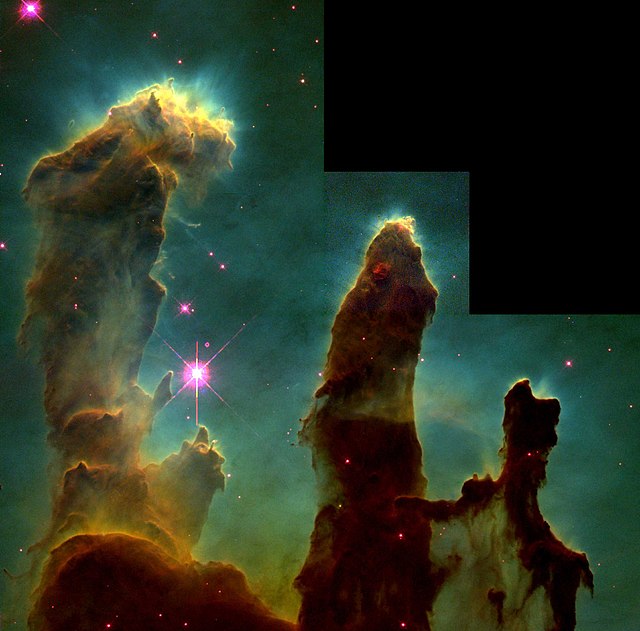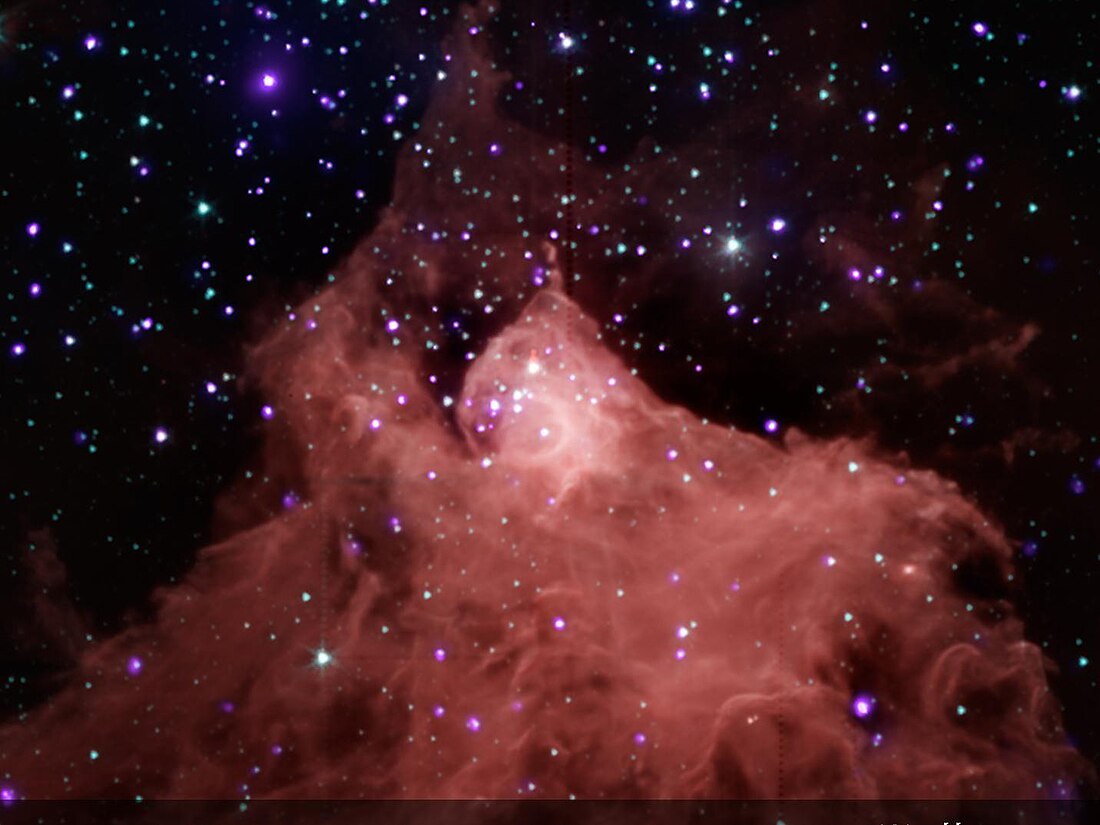Top Qs
Timeline
Chat
Perspective
Infrared dark cloud
Cold, dense region of a giant molecular cloud From Wikipedia, the free encyclopedia
Remove ads
An infrared dark cloud (IRDC) is a cold, dense region of a giant molecular cloud. They can be seen in silhouette against the bright diffuse mid-infrared emission from the galactic plane.[1][2]



Discovery
Infrared dark clouds have only been recently discovered in 1996 using the ISO[3] and therefore are in need of further research.[4] The Spitzer Space telescope, created by NASA to detect infrared radiation,[5] assisted in the location and identification of infrared dark clouds. The highly sensitive telescope was used to analyze the Milky Way and create numerous astronomical surveys at wavelengths that allowed for the detailed analysis of IRDCs. Through the use of convolutional neural networks,[6] an IRDC catalog consisting of 18,845 items was created by two astronomers named Jyothish Pari and Joe Hora, who created a computer algorithm which could efficiently scan the images created by the Spitzer telescope’s IRAC camera to find infrared dark clouds.[7]
Remove ads
Importance
Astronomers believe that they represent the earliest stage in the formation of high-mass stars [8] and are therefore of great importance for understanding the star formation process as a whole.[9]
Statistics and Mass
This section needs expansion. You can help by adding to it. (December 2010) |
See also
References
Wikiwand - on
Seamless Wikipedia browsing. On steroids.
Remove ads
